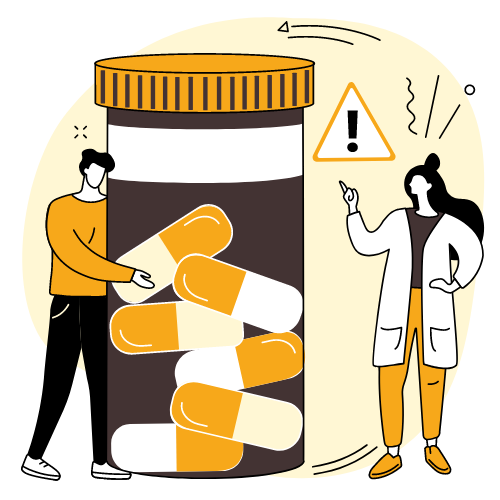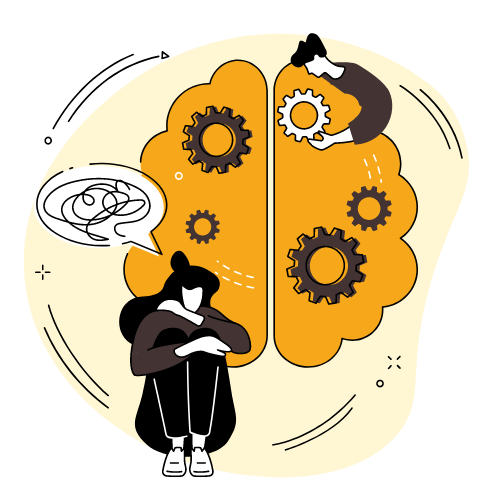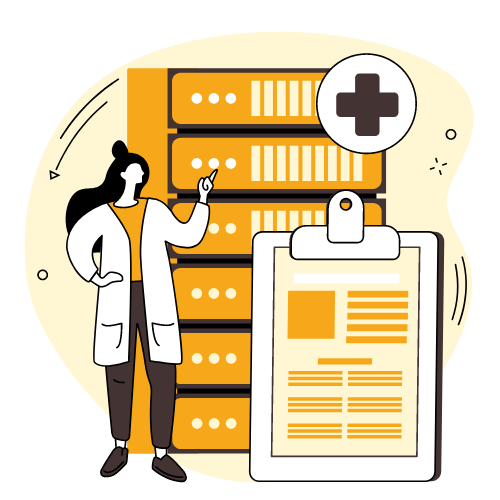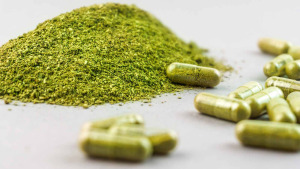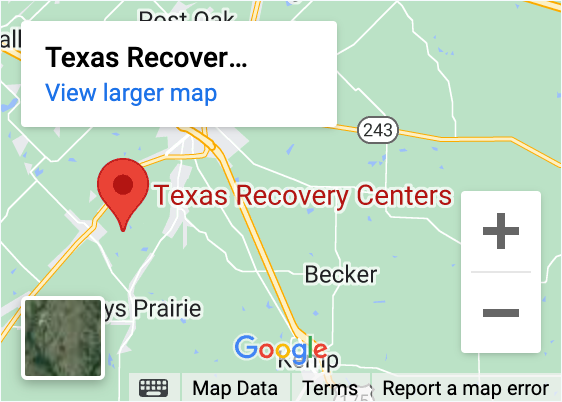
Heroin Identification: Spotting Heroin and Signs of Addiction
My son Tom had always been an easy-going, fun person ever since he was a little kid, but he started acting differently. He would be out until all hours of the night and I never knew where he’d gone. Sometimes I’d go searching for him, but Dallas is a big city and trying to find him just added to the stress. He didn’t seem interested in his usual hobbies, and I kept catching him in lies about where he’s been. Sometimes he would come home seeming really out of it, like he couldn’t finish his thoughts or he was extremely tired. I didn’t know what to do or how to help him. I just felt like he wouldn’t let me in. Heroin is a highly addictive opioid street drug that is becoming increasingly common in the Texas today. If your loved one has started acting differently than usual or has been for a while, and you have reason to suspect they could be struggling with a heroin addiction, it is important that you know what you’re looking for.
Identifying Heroin
Once I went into Tom’s room, just to put his laundry away for him. He seemed so busy, and I was just trying to help out. When I opened his dresser to put his clothes away, I saw something weird. A little baggie sticking out from under some clothes. When I pulled it out, I saw the bag was filled with a small amount of a fine, white powder. I opened the bag, and while I was careful not to inhale any of it, I caught a bitter smell. Heroin is made from morphine and typically comes in a powder form that is white or brown. It is often cut with baking soda, talcum powder, and other powdered substances. Black tar heroin is another form of the drug, which is dark and gooey to the touch. [inline_cta_three] While very high quality heroin is odorless and tasteless, most heroin is not pure, as it is much more expensive to produce, which often results in it having a bitter smell and taste. Heroin use has been on the rise in Texas since 2011, so is becoming more and more common.
Heroin Consumption Methods
I knew there were different ways Tom could be getting it into his system. I had seen enough about heroin from TV to know that he could be using lots of different tools. I tried to remember what all they could be, but I wasn’t even sure what I was looking for. Heroin is often injected into the bloodstream using needles, snorted in powder form, or smoked. Each method of consuming heroin comes with different dangers. People who inject heroin run the risk of sharing needles and spreading blood-borne diseases like HIV/AIDs. Snorting heroin can cause long-term or permanent damage to the nasal cavity. Smoking can cause damage to the lungs and airway over time, but it also gets the drug to the brain extremely quickly, making it a very easy way to overdose on heroin. People who are snorting heroin may have noticeable issues with their nose and airway, such as sniffling or a painful nose. Smoking heroin may result in a persistent cough. Injecting heroin typically results in needle marks or “tracks” up and down the arms. Injecting can also result in skin infections and other chronic skin issues that may be visible.
Identification of Drug Paraphernalia (Tools)
After I found the powder, I did a little more digging through Tom’s drawers. I knew it was wrong to invade his privacy, but I was extremely worried about him. In the drawer, under his socks, I found more small baggies with the white substance. I also found a tie that looked dirty and beat up, along with a burnt spoon and a needle that looked as if it had already been used more than once. I knew germs and diseases could potentially be contaminating the needle in particular and didn’t touch any of the paraphernalia. When it comes to paraphernalia, everyday objects can be used to take heroin. Heroin is often transported in:
- Balloons
- Little bits of foil
- Small baggies
Heroin is often snorted using:
- Hollowed out pens
- Razor blades
- Rolled up dollar bills
- Straws
Items used for shooting up heroin typically include:
- A burnt spoon or bottle cap used to heat up a mixture of liquid and heroin
- A belt or similar articles that can be used to tie up the arm and make veins more visible
- Lighters
- Syringes for injecting the drug
Heroin is often smoked using:
- Burnt aluminum foil
- Burnt soda cans
- A straw is commonly used with both of the above to inhale vapors
- A pipe
While any of these items individually may not be reason for concern, when found together, they may be a sign of heroin addiction. Do not touch heroin paraphernalia if you locate it because it could be contaminated with trace amounts of heroin or other drugs. Old needles in particular are very dangerous because they could carry blood-borne diseases.
How Does Heroin Affect the Body?
Sometimes when Tom would come home, I would notice that the way he was acting was more than just different, it was very strange. He would be barely able to keep his eyes open, and when he could keep them open, his pupils would be very small. His face was very relaxed, and his breathing would slow down a lot, almost like he was very sleepy. Sometimes he would just kind of slump with his head in his hands at the table for a few minutes before coming back around. Sometimes I would watch his chest rise and fall just to make sure he was still breathing. He looked warm and red in the face, and would sometimes trip over his words while trying to explain things. A heroin high can last for as long as four or five hours. Heroin, like other opioids, dampens the central nervous system, impacting pain and pleasure receptors as well as sleeping, heart rate, and breathing. In the beginning stages of heroin intoxication, people experience what’s called a “rush” of euphoria (intense happiness) as the drug finds the receptors in a person’s brain. This can last anywhere from two to 20 minutes and is a big part of what makes heroin so addictive. However, as someone struggling with heroin builds up a tolerance, it can be harder and harder to recreate that first rush. Someone under the influence of heroin may show physical signs that include:
- Heavy eyelids
- Small pupils (the black centers of the eyes)
- Slurred speech
- Slowed breathing
- Loose or extremely relaxed body and facial expressions
- Warm flush
- Coming in and out of consciousness, otherwise known as “nodding”
- An inability to feel pain
Short-term Side Effects of Heroin
Other times, Tom would appear to have trouble thinking, as if he couldn’t remember what he was doing from moment to moment and couldn’t communicate properly. He would scratch at different parts of his body, but the way he moved his arms seemed almost like they were heavy and difficult to move. Sometimes he would lock himself in the bathroom, and I could hear him vomiting, but he would insist that he was fine. Heroin has many short-term side effects that can be very dangerous for the person having them. Noticeable side effects of heroin intoxication may include:
- Flushed skin
- Dry mouth
- Heavy feeling in the arms and legs
- Nausea
- Vomiting
- An inability to think clearly
- Slowed breathing and heart rate
- Extreme itching
People who are developing a drug addiction often make lifestyle changes as well. They may stop hanging out with their friends or start hanging out with new ones. They might lose interest in topics or hobbies they used to enjoy. It is also common for people to be in sudden need of money. Slowed heart rate and breathing can both be extremely dangerous and even life-threatening. Severely slow breathing has the potential to cause a coma or even brain damage.
What Does a Heroin Overdose Look Like?
If someone is showing signs of a heroin overdose, call 911 immediately. One time I walked in on Tom overdosing. He was lying in his bed unresponsive. His skin was almost blue, and he was cold and sweaty to the touch. He was making a low gurgling sound in his sleep, and there was a small pool of vomit next to him. I was terrified that he was dying or already dead. Luckily, I called 911 in time, and they got him into an emergency room. According to data compiled by the Texas Department of Health Services, heroin overdoses have significantly increased in Texas overall, with high incidences in Harris and Dallas Counties. 
- Excessive vomiting
- Constipation
- Choking or gurgling in their sleep
- Skin that looks bluish purple or grey depending on their complexion
- Irregular breathing
- No discernible breathing
- Irregular heartbeat
- No discernible heartbeat
- Pale or clammy skin and face
- Unresponsive to anything you do
- Awake and possibly aware, but not able to respond
- Low blood pressure
If someone is overdosing, they need medical attention immediately. A heroin overdose can be treated using Naloxone (Narcan). While naloxone can be purchased as a nasal spray for emergencies, a severe overdose may require more than one dose of naloxone, which is why it is important to get a person having an overdose to a medical professional as quickly as possible.
Long-term Side Effects of Heroin
Over time, I noticed Tom getting worse and worse. He started having a lot of stomach issues. He would spend almost an hour in the bathroom at a time. He started having a lot of trouble handling stressful situations at school, work, and home. He would fight with me a lot more than he used to, even when I first noticed that something was wrong. I also noticed he was coming home high more and more often. Things were getting out of control, and I didn’t know what to do. Heroin has many effects on the body and can have many long-term side effects. Long-term side effects of heroin include:
- Worsening constipation
- Stomach pain
- Brain damage, which can result in a lack of impulse control or the ability to handle stressful situations
- Damage to the nasal cavity, blood vessels, or lungs, depending on the way the drug is taken
- Increased tolerance to the drug
- Addiction/increased physical dependence on the drug
The Health Risks of Heroin Addiction
Eventually, Tom started to face more health issues. He got chronic kidney disease, where his kidneys couldn’t filter out waste and fluid from his blood. His skin was also damaged by regularly breaking the skin with needles, and he got multiple abscesses in the skin that would leave and then come back. He was in and out of the hospital, and we started to get buried in medical bills that were becoming increasingly difficult to keep up with. Long-term heroin addiction can lead to serious health problems that will need further medical treatment. These issues typically occur after someone has been taking heroin for some time. These conditions include but are not limited to:
- Skin damage and infections, including pimples, warts, and other issues
- Brain damage
- Damage to the heart and valves
- Kidney disease, or an inability of the kidneys to filter toxins from the blood
- Hormonal imbalance leading to an inability to perform sexually
- Damage to the veins
- Pneumonia
- Coma
- Death
Side Effects of Heroin Withdrawal
Tom knew he was struggling with heroin, and he tried to quit on his own more than once. He would get extremely anxious and would be unable to sit still, often pacing or wandering around. He would switch from that restlessness to extreme pains throughout his body that would make it difficult for him to move. His stomach issues would get even worse, and he would spend hours in the bathroom. No matter how many times he tried to quit on his own, he would always end up going back because he couldn’t deal with the heroin withdrawal symptoms. Withdrawing from opioids is not usually fatal, but it can be a painful, uncomfortable, and dangerous process. Detoxing should never be attempted alone and should always be done under the supervision of an experienced professional. [inline_cta_two] Symptoms someone going through heroin withdrawal may have include:
- Intense muscle pain
- Intense bone pain
- Sudden change in body temperature, like getting hot or cold
- Vomiting
- Diarrhea
- Nervousness or sudden, unfounded anxiety
- Restlessness or an inability to sit still
Effective Heroin Addiction Treatment Is Available at Texas Recovery Center
Eventually, Tom got treatment. Instead of trying to end his addiction on his own, he got help from experienced medical professionals who knew how to help him through the detox and healing process. While it wasn’t easy for Tom to quit, I am so glad he did. He is much better now, and he is getting his life together. At Texas Recovery Center, we know addiction isn’t just a physical battle, it’s a mental, emotional, behavioral, and social one as well. That’s why we offer a wide variety of therapy and treatment options at our inpatient clinic, including:
- Cognitive-behavioral therapy (CBT)
- Dialectical behavior therapy (DBT)
- Motivational interviewing (MI)
- Medication-assisted treatment (MAT)
- Mindfulness and stress management practices
- Adventure therapy
- Recreational and art therapies
- Family therapy and support
We also offer dual diagnosis treatment, which helps to treat addiction in combination with other mental health or behavioral issues, such as depression, anxiety, attention-deficit hyperactivity disorder (ADHD), and post-traumatic stress disorder (PTSD).
Get Started Toward a Healthy Future Today
Does Tom’s story remind you of someone in your life? If you have identified any of the above signs and symptoms of heroin addiction in your loved one, it is time to get them the help they need. A treatment program is essential for anyone struggling with heroin. Getting in touch is the first step. Call Texas Recovery Center at (888) 759-5073.


